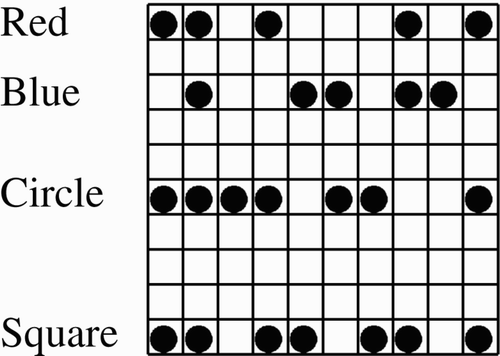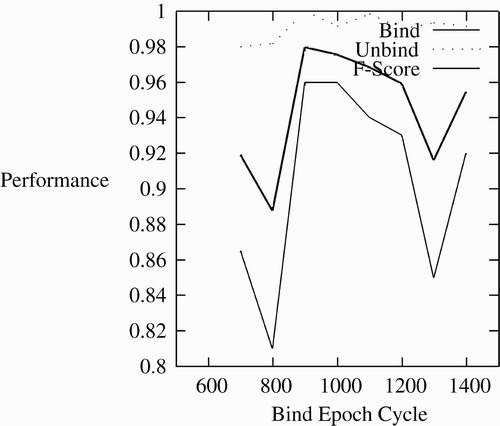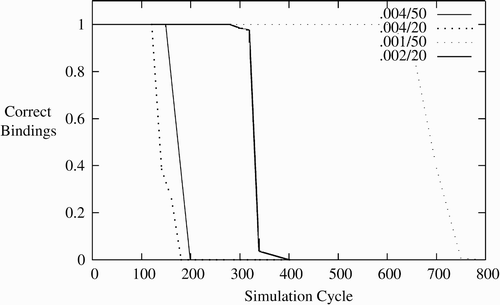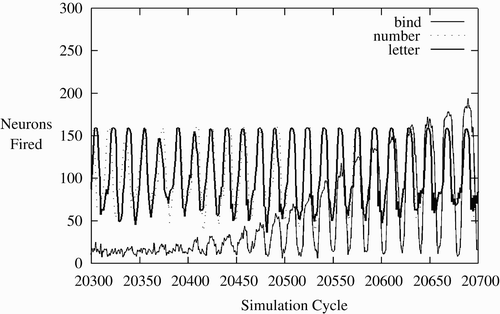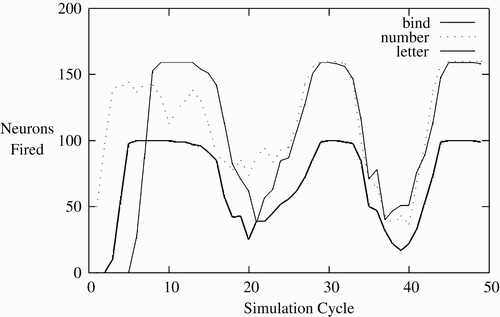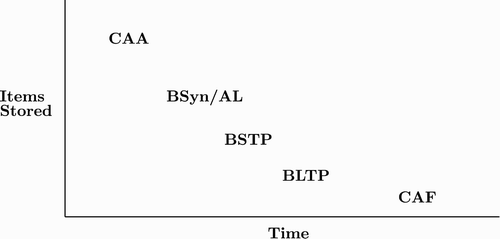Figures & data
Figure 1. Idealised binding with bind node: initial binding of red and square is later replaced by blue binding with circle.
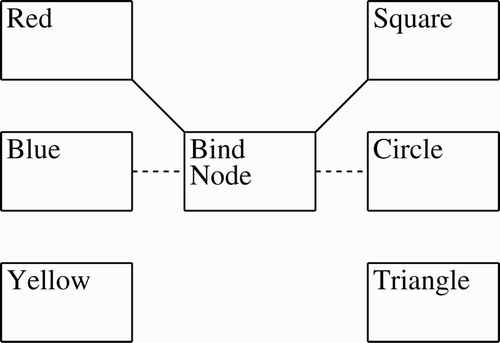
Figure 3. Topology of intra-subnet connections in the compensatory LTP binding simulation: each neuron in the base subnets connect to the bind subnet, and each neuron in the bind subnet connects to the base subnets.

Table 1. Network constants.
Figure 7. Gross topology of the simulation of binding with frames. The rule subnet inhibits the slots of the frames that are not active, and the slots are bound to the appropriate verbs and nouns via STP.

